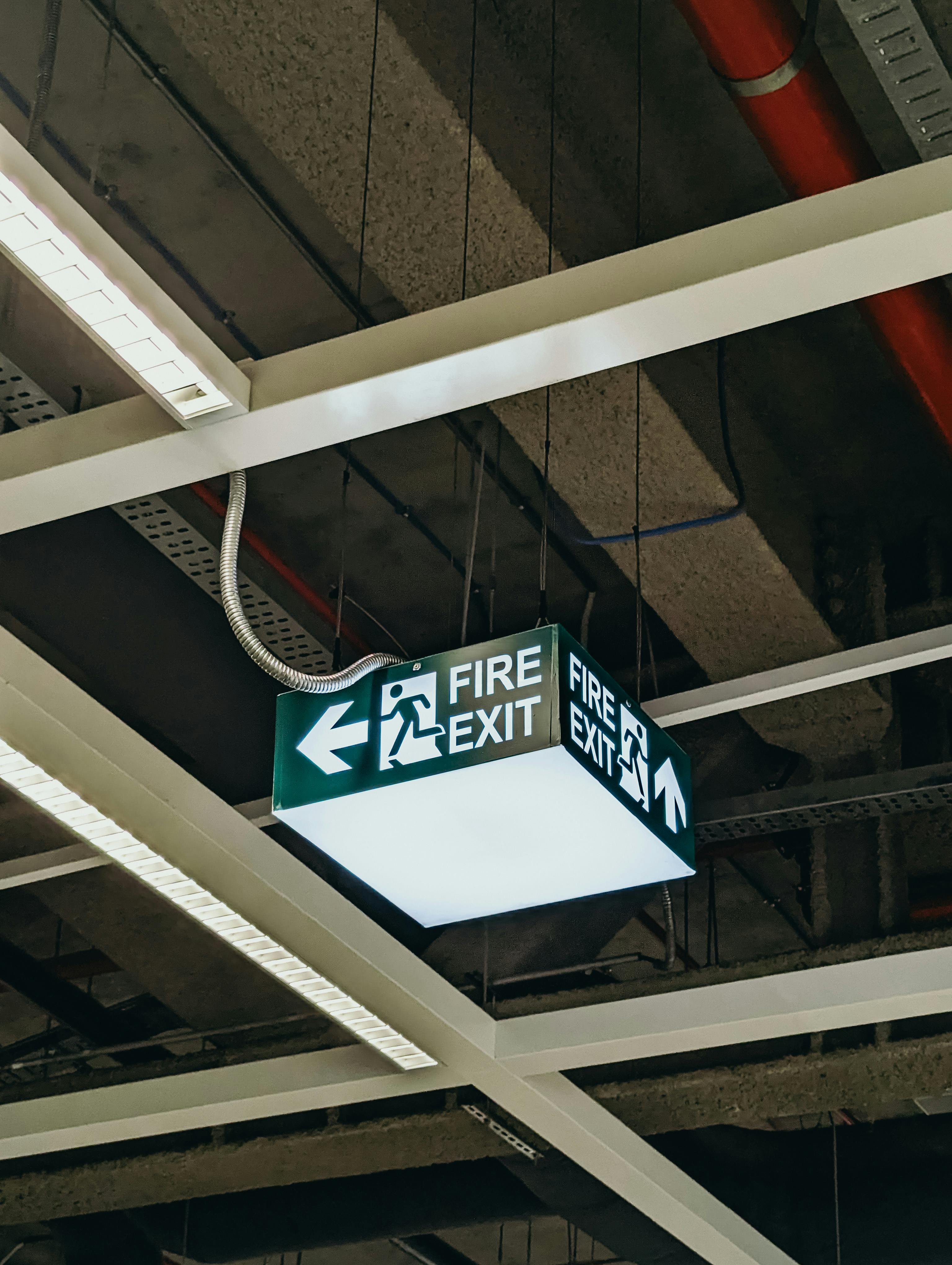In today’s rapidly changing world, the need for emergency relief efforts has become increasingly prevalent. Whether it’s providing aid after a natural disaster or supporting communities affected by a crisis, the importance of securing sponsorships for these relief initiatives cannot be understated. With limited resources and a pressing need for immediate assistance, organizations are constantly looking for innovative ways to attract and engage potential sponsors. In this article, we will explore effective strategies and valuable insights on how to navigate the complex world of getting sponsorships for emergency relief efforts. From building strong partnerships to leveraging social media platforms, you will discover the key ingredients to successfully securing support for your noble cause. So, grab a cup of coffee and get ready to embark on a journey that will help you make a tangible difference in the lives of those in need.

Understanding Emergency Relief Efforts
What are emergency relief efforts?
Emergency relief efforts refer to the immediate response and support provided to individuals, communities, and regions affected by natural disasters, humanitarian crises, or emergencies. These efforts aim to alleviate suffering and provide essential resources, such as food, water, shelter, medical assistance, and psychological support, to those affected.
Emergency relief efforts are crucial in ensuring the well-being and survival of individuals in crisis situations, as they provide the necessary resources and assistance during the critical aftermath of a disaster. These efforts are often carried out by governments, non-profit organizations, and humanitarian agencies, who work tirelessly to provide aid to those in need.
Why is sponsorship important?
Sponsorship plays a vital role in supporting emergency relief efforts. In a crisis situation, funding is essential to mobilize resources and provide immediate assistance to affected areas. Sponsors provide the financial support necessary to respond quickly and effectively to the needs of affected individuals and communities.
By sponsoring emergency relief efforts, companies, organizations, and individuals can make a significant impact by contributing to the provision of essential resources, infrastructure rebuilding, and sustainable recovery programs. Sponsorship not only provides immediate relief but also plays a crucial role in helping affected communities rebuild their lives, infrastructure, and economy in the long run.
Sponsorship also helps raise awareness about the ongoing crisis and encourages others to contribute to the relief efforts. It creates a platform for collaboration and brings together different stakeholders to work towards a common goal of helping those affected by the disaster.
Identifying Potential Sponsors
Government organizations
Government organizations at the local, state, and national levels often play a critical role in emergency relief efforts. These organizations have the necessary resources, infrastructure, and authority to respond quickly and effectively in times of crisis. Additionally, they often have dedicated emergency management departments that coordinate relief efforts and provide financial support.
When identifying potential government sponsors, research local, state, and national government agencies responsible for emergency management. Contact their respective departments and present your proposal for sponsorship. Governments are often willing to provide financial support to organizations that demonstrate a strong commitment to supporting affected communities.
Corporate sponsors
Corporate sponsors can be an invaluable source of funding, expertise, and resources for emergency relief efforts. Many companies recognize the importance of corporate social responsibility and are actively involved in supporting communities during times of crisis. These sponsors can provide significant financial contributions, in-kind donations, and logistical support.
To identify potential corporate sponsors, research companies that align with the cause of emergency relief efforts. Look for companies in industries related to construction, logistics, healthcare, and food and water supply, as they may have a vested interest in supporting relief efforts. Reach out to their corporate social responsibility departments and present your proposal for sponsorship, highlighting the potential benefits for their brand and corporate image.
Non-profit organizations
Non-profit organizations dedicated to humanitarian and disaster response efforts are natural partners for emergency relief sponsorship. These organizations have the expertise, experience, and networks to effectively respond to crises. They can provide guidance, support, and resources to enhance the relief efforts.
Research and compile a list of non-profit organizations with a focus on emergency relief, disaster response, or humanitarian aid. Reach out to these organizations and present your proposal for sponsorship, detailing how their support would amplify the impact of the relief efforts. Many non-profit organizations have established relationships with potential sponsors and can assist in connecting you with interested parties.
Individual donors
Individual donors can make a significant impact on emergency relief efforts through their financial contributions. These compassionate individuals are often motivated to support causes that resonate with them on a personal level. Engaging with individual donors allows for direct and immediate support to affected communities.
To attract individual donors, leverage personal connections and broaden your reach through social media platforms, websites, and crowdfunding campaigns. Craft compelling narratives that showcase the impact of their contributions and highlight the importance of solidarity during times of crisis. Ensure transparent communication and provide regular updates on how their donations are being utilized.
Crafting a Compelling Proposal
Understanding the needs
Before approaching potential sponsors, it is essential to have a deep understanding of the needs of the affected communities. Conduct a thorough needs assessment, which includes gathering relevant data, conducting on-the-ground assessments, and engaging with local stakeholders. This information will help you identify the specific needs and priorities that require immediate attention and support.
Setting clear goals
Setting clear and measurable goals is crucial in designing a compelling proposal. Define what you aim to achieve through the emergency relief efforts, whether it is providing immediate survival assistance, long-term recovery support, or rebuilding infrastructure. Ensure that each goal is specific, measurable, achievable, relevant, and time-bound (SMART).
Highlighting impact
Make sure to emphasize the potential impact of the emergency relief efforts in your sponsorship proposal. Utilize data, success stories, and testimonials from individuals and communities who have benefited from similar efforts in the past. Demonstrating the tangible outcomes of your proposed initiatives can instill confidence in potential sponsors and showcase the effectiveness of their support.
Creating a budget
Develop a comprehensive budget that outlines the resources needed to implement the emergency relief efforts. Include costs related to immediate response, infrastructure rebuilding, capacity-building initiatives, and ongoing support. Ensure that your budget is realistic, transparent, and aligned with the proposed goals and activities.
Formulating a sponsorship package
Craft a clear and professional sponsorship package that outlines the benefits of partnering with your organization or initiative. Specify the different sponsorship levels and detail the corresponding benefits, such as brand exposure, recognition, and community engagement. Tailor the sponsorship package to cater to the specific interests and objectives of each potential sponsor.
Building Relationships with Sponsors
Creating a sponsorship strategy
Develop a comprehensive strategy for engaging with potential sponsors and nurturing long-term partnerships. Identify your target sponsors, define your message and objectives, determine the best channels of communication, and outline the steps for relationship-building.
Identifying key contacts
Identify the key decision-makers and contacts within potential sponsor organizations. These individuals may include corporate social responsibility managers, marketing directors, or senior executives. Research their background and interests to personalize your approach and establish a genuine connection.
Establishing initial contact
Initiate contact with potential sponsors through personalized emails, phone calls, or in-person meetings. Begin by expressing your admiration for their brand or organization’s efforts and explain how their support could make a significant impact. Attach your sponsorship proposal and request a meeting to discuss further details.
Setting up meetings
Arrange face-to-face meetings with potential sponsors to present your proposal and discuss collaboration opportunities. Prepare a concise and compelling presentation, emphasizing the unique value of partnering with your organization. During the meeting, listen actively, address their concerns, and be prepared to answer any questions they may have.
Building rapport and trust
Building strong relationships based on trust and mutual respect is crucial for securing sponsorships. Foster open and transparent communication by providing regular updates, maintaining professionalism, and demonstrating accountability. Actively seek feedback and incorporate it into future collaboration plans to show your commitment to continuous improvement.

Negotiating Sponsorship Agreements
Determining sponsorship levels
When negotiating sponsorship agreements, determine the different levels at which sponsors can contribute. This can be based on the amount of financial support provided or the extent of the benefits offered to sponsors. Clearly define the specific opportunities and recognition each level offers.
Defining sponsorship benefits
Work closely with potential sponsors to define the specific benefits they will receive in exchange for their support. These can include brand exposure, logo and name recognition, media coverage, speaking opportunities at events, and involvement in community initiatives. Align the benefits with the sponsor’s marketing and corporate social responsibility objectives.
Negotiating financial support
During the negotiation process, discuss the financial support the sponsor is willing to provide. Be prepared to negotiate and find a mutually beneficial level of funding. Demonstrate the impact their contributions will have on the relief efforts and the positive exposure they will receive in return.
Setting expectations and deliverables
Agree upon clear expectations and deliverables with sponsors, ensuring that both parties are aligned on the desired outcomes. Establish timelines, reporting mechanisms, and evaluation methods to track progress and measure the success of the sponsorship agreement. Regularly communicate updates on the relief efforts, demonstrating the sponsor’s direct involvement and impact.
Promoting Sponsorship Opportunities
Creating marketing materials
Create visually appealing and informative marketing materials that highlight the sponsorship opportunities available. These materials should clearly outline the benefits sponsors will receive, such as logo placement, media exposure, and branding opportunities. Utilize online platforms, brochures, and infographics to effectively communicate the value of sponsoring the relief efforts.
Utilizing social media
Leverage social media platforms to reach a wider audience and promote the sponsorship opportunities available. Share engaging content, success stories, and updates on the relief efforts. Encourage sponsors to share their involvement on their own social media channels to amplify the message and reach.
Contacting media outlets
Reach out to local and national media outlets to raise awareness about the emergency relief efforts and the sponsorship opportunities. Craft press releases, media pitches, and feature stories that highlight the importance of the cause and the contributions of sponsors. Securing media coverage generates additional exposure and increases the likelihood of attracting more sponsors.
Hosting information sessions and events
Organize information sessions and events where potential sponsors can learn more about the emergency relief efforts and the opportunities for sponsorship. These events allow for direct engagement, provide a platform for questions and answers, and facilitate networking between sponsors and other stakeholders. Capture attendees’ contact information to follow up and nurture potential sponsorship leads.

Acknowledging and Recognizing Sponsors
Expressing gratitude
Express sincere gratitude and appreciation to sponsors for their support. Send personalized thank-you notes or emails, highlighting the impact of their contributions. Recognize the role they played in the relief efforts and acknowledge their commitment to making a difference.
Providing regular updates
Keep sponsors informed through regular updates on the progress of the emergency relief efforts. This can include newsletters, reports, or in-person meetings. Share success stories, photos, and testimonials to illustrate the impact of their support. Demonstrate transparency and accountability by providing financial statements and progress reports.
Recognizing sponsors publicly
Publicly recognize sponsors through various channels, such as websites, social media posts, press releases, and event signage. Highlight the level of their support and the specific contributions they have made. Celebrate their commitment to the cause and the positive impact it has had on affected communities.
Offering sponsorship incentives
Offer additional incentives to sponsors to enhance their involvement and encourage ongoing support. This can include invitations to exclusive events, VIP access to relief efforts, or personalized recognition at key events. Tailor the incentives based on the sponsor’s preferences and interests.
Measuring Success and Impact
Monitoring progress
Implement a monitoring and evaluation system to track the progress of the emergency relief efforts. Continuously collect data, measure key performance indicators, and evaluate the effectiveness of the strategies implemented. Regularly review progress against the defined goals and make necessary adjustments as required.
Collecting feedback
Seek feedback from sponsors to better understand their experiences and identify areas for improvement. Conduct surveys, interviews, or focus groups to gain insights into their satisfaction, expectations, and suggestions. Utilize this feedback to enhance future sponsorship opportunities and strengthen sponsor relationships.
Analyzing data and metrics
Analyze collected data and metrics to assess the impact of the emergency relief efforts. Examine trends, patterns, and success indicators to identify areas of success and areas that require attention. Use this data to demonstrate the effectiveness of the relief efforts to sponsors and stakeholders.
Sharing success stories
Share success stories and the positive impact of the emergency relief efforts with sponsors, donors, and the wider community. Use testimonials, case studies, and multimedia content to convey the stories of individuals or communities who have benefited from the relief efforts. Illustrate the tangible outcomes and transformative effect of the support received.
Evaluating impact
Conduct comprehensive evaluations of the impact and outcomes of the emergency relief efforts. Measure the extent to which goals were achieved and assess the long-term sustainability of the initiatives implemented. Include both qualitative and quantitative assessments to provide a holistic understanding of the impact.
Maintaining Long-Term Relationships
Nurturing ongoing communication
Maintain regular communication with sponsors beyond the immediate relief efforts. Keep sponsors informed about ongoing initiatives, future projects, and opportunities for collaboration. Continuously involve sponsors in decision-making processes and seek their input on strategy development and implementation.
Ensuring accountability
Demonstrate accountability by providing sponsors with detailed reports on the utilization of their contributions. Clearly outline how their support has made a difference, highlighting the outcomes achieved and the lives impacted. Maintain transparency in financial management and provide audited financial statements when requested.
Providing post-event reports
Provide sponsors with comprehensive post-event reports that document the outcomes, impact, and success of the emergency relief efforts. Include data, testimonials, and an analysis of the challenges encountered and lessons learned. This report serves as a valuable resource for sponsors to understand the value of their support and the effectiveness of their partnership.
Seeking future collaborations
Seek opportunities for future collaborations and partnerships with sponsors. Discuss potential areas for ongoing support, such as long-term recovery programs, capacity-building initiatives, or disaster preparedness projects. Be proactive in nurturing the relationship and exploring possibilities for continued engagement.
Conclusion
Securing sponsorships for emergency relief efforts is a critical component in ensuring the successful and sustainable implementation of relief initiatives. By understanding the needs of affected communities and crafting compelling proposals, you can attract potential sponsors from various sectors. Building and maintaining strong relationships with sponsors requires effective communication, negotiation, and recognition. By measuring the impact of relief efforts, expressing gratitude, and seeking continued collaboration, you can foster long-term partnerships that contribute to the resilience and recovery of communities in times of crisis. Remember, sponsorship is a powerful tool that enables individuals, organizations, and corporations to make a significant and lasting difference in the lives of those affected by emergencies.





